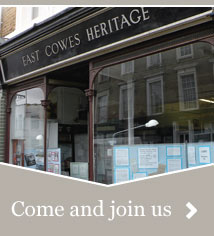People and Places
The Isle of Wight is the location of many historic and famous places with national and international importance. The Island may be small but it has contributed much to British culture and helped in the advancement of industry and technology. Listed below are some places of interest with links to sites for more information. Historic Buildings Brading Roman Villa - One of several villas discovered on the Island. A visitors centre is built over the site. Osborne House - The seaside home of Queen Victoria and where she spent her final years until her death in 1901. Carisbrooke Castle - A motte-and-bailey castle located in the village of Carisbrooke, near Newport. Yarmouth Castle- an artillery fort built by Henry VIII in 1547 to protect Yarmouth Harbour from the threat of French attack. Needles Battery - Old Battery is Victorian to protect the Island from the French, the New Battery built later with coastal guns and used in both World Wars to protect from invasion. Later a rocket testing facility. Notable People Arts and Literature Alfred Lord Tennyson - Poet Laureate during Victoria's reign and lived at Freshwater, penning works such as 'The Charge of the Light Brigade' and 'Ulysses'. John Keats - Romantic poet lived for a time in Carisbrooke and Shanklin Algernon Swinburne - Victorian poet and novelist. Buried at Bonchurch Julia Margaret Cameron - Pioneering photographer taking portraits of the famous and influential visitors to the Island. Lived at Dimbola Lodge, Freshwater. Anthony Minghella - Ryde-born film director, The English Patient and The Talented Mr Ripley Science and Discovery Robert Hooke - 17th Century architect and polymath. Prolific inventor and pioneer of microscopic analysis. Born in Freshwater. John Milne - Pioneer in the science of seismology and inventor of the horizontal pendulum seismograph. Lived and worked in Shide. Further information here. Guglielmo Marconi - Radio and telegraphy pioneer set up wireless station at a hotel near the Needles. Christopher Cockerell - Inventor of the hovercraft. Research and development works were based at East Cowes. Royalty King Charles I - King of England from 1600, imprisoned at Carisbrooke Castle before his trial after the Civil War in 1649. Queen Victoria - Queen from 1837 -1901. Made Osborne House, East Cowes, one of her homes and lived there permanently during the last years of her life.People and places


